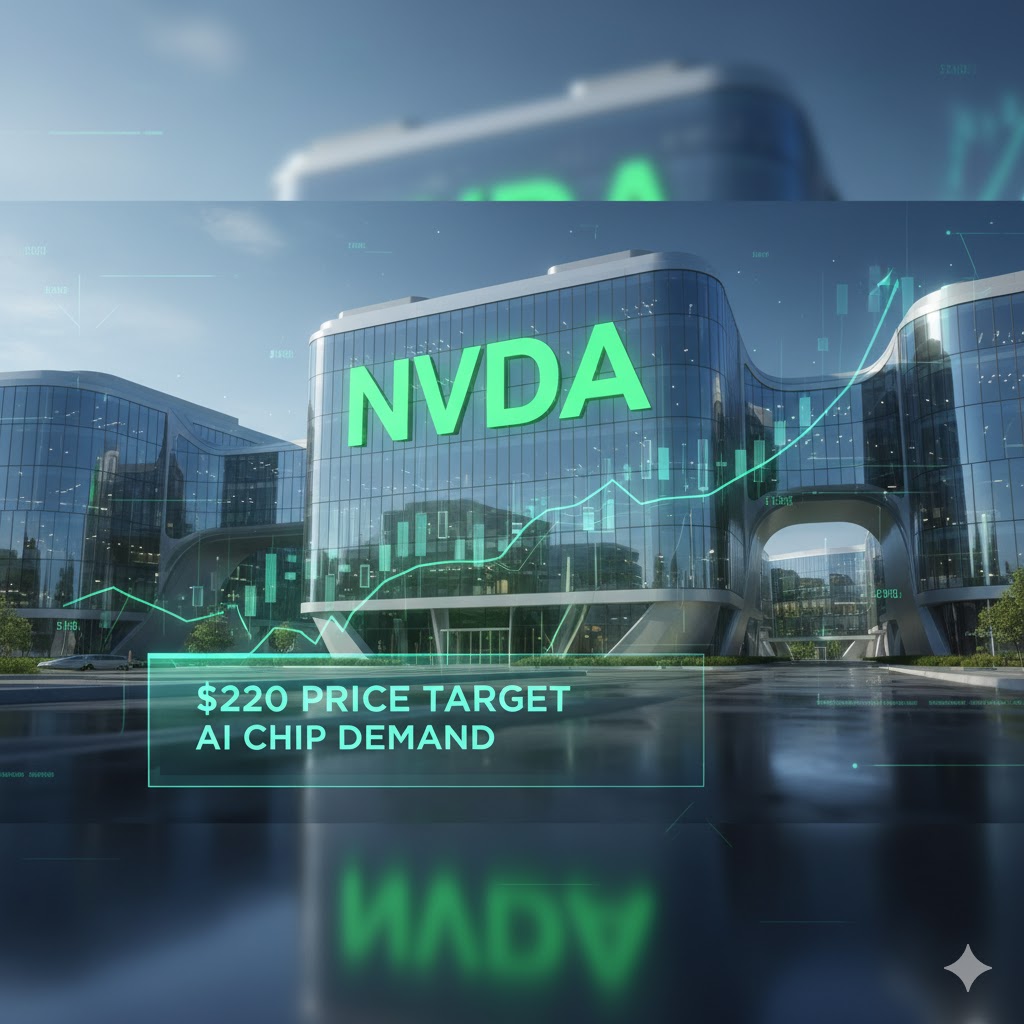Nvidia stock: why did Morgan Stanley raise its price target before earnings?

Morgan Stanley just doubled down on its bullish Nvidia bet, raising its price target to $220 from $210 just days before the chip giant’s pivotal earnings report on November 19.
The timing is deliberate as Wall Street’s top semiconductor analyst Joseph Moore, is signaling that the market has overlooked a major inflection point in Nvidia’s business.
Moore’s updated bull case rests on three pillars: accelerating Blackwell demand, a cleaner supply picture, and what he calls “convex earnings leverage,” essentially, earnings growth that accelerates faster than revenue growth as operational efficiency improves.
The upgrade comes as investors fear valuations have gotten too rich and tech stocks face headwinds from rate-cut disappointments.
The Blackwell ramp is faster than expected
Morgan Stanley’s bull thesis hinges on internal checks that reveal material acceleration in Nvidia’s AI chip business.
The Blackwell architecture, which offers a 40x performance improvement over its predecessor Hopper, is ramping faster than consensus expected.
Moore explicitly stated that he anticipates “the strongest result we have seen in the last few quarters” when Nvidia reports Q3 earnings this week.
Analyst projections call for Q3 revenue around $54.8 billion, but Moore’s commentary suggests the actual number could surprise to the upside.
More importantly, forward guidance for Q4 is expected to be around $61 billion, and Morgan Stanley believes even that could prove conservative if Blackwell adoption accelerates further.
The supply chain is also improving. Earlier in the year, advanced packaging capacity at TSMC and high-bandwidth memory (HBM) from SK Hynix were massive bottlenecks.
Morgan Stanley sees those constraints easing, which means Nvidia can now convert pent-up demand into actual shipments.
When you have customers (hyperscalers, enterprise buyers, governments) desperate for chips and supply finally catches up to demand, the math for earnings becomes explosive.
What’s particularly striking is Moore’s visibility into future demand. He highlighted “very strong” signals for Nvidia’s upcoming Rubin platform, which launches in 2026 and could be 3.3 times faster than Blackwell.
That forward momentum suggests Nvidia won’t face a cliff after Blackwell peaks. Enterprise AI customers are locking in long-term capacity, creating a multi-year revenue stream that justifies the elevated valuation.
Valuation is justified if execution continues
Critics argue Nvidia is overpriced, trading at roughly 30x forward earnings, expensive even for a growth stock.
Morgan Stanley’s $220 target implies just 15-20% upside from current levels, which seems tame for a semiconductor bull case.
But the firm’s logic is that once markets digest Blackwell’s scale and profitability potential, the multiple deserves to stay elevated.
Moore is essentially betting that investors who sold on valuation concerns will regret that decision once they see the magnitude of Q3-Q4 earnings beats.
The rise to $220 also reflects confidence that Nvidia won’t miss. If the company stumbles, whether on guidance, supply constraints, or softening demand from China, the stock could crack quickly.
But Morgan Stanley’s analyst team has “checked” with sources and come away convinced that the fundamentals are accelerating, not decelerating.
In a market worried about AI hype and fading returns on AI investment, that conviction stands out.
By raising the price target before earnings, Morgan Stanley is putting its credibility on the line. The message is clear: Nvidia’s next chapter is just beginning, and November 19 will prove it.
The post Nvidia stock: why did Morgan Stanley raise its price target before earnings? appeared first on Invezz



